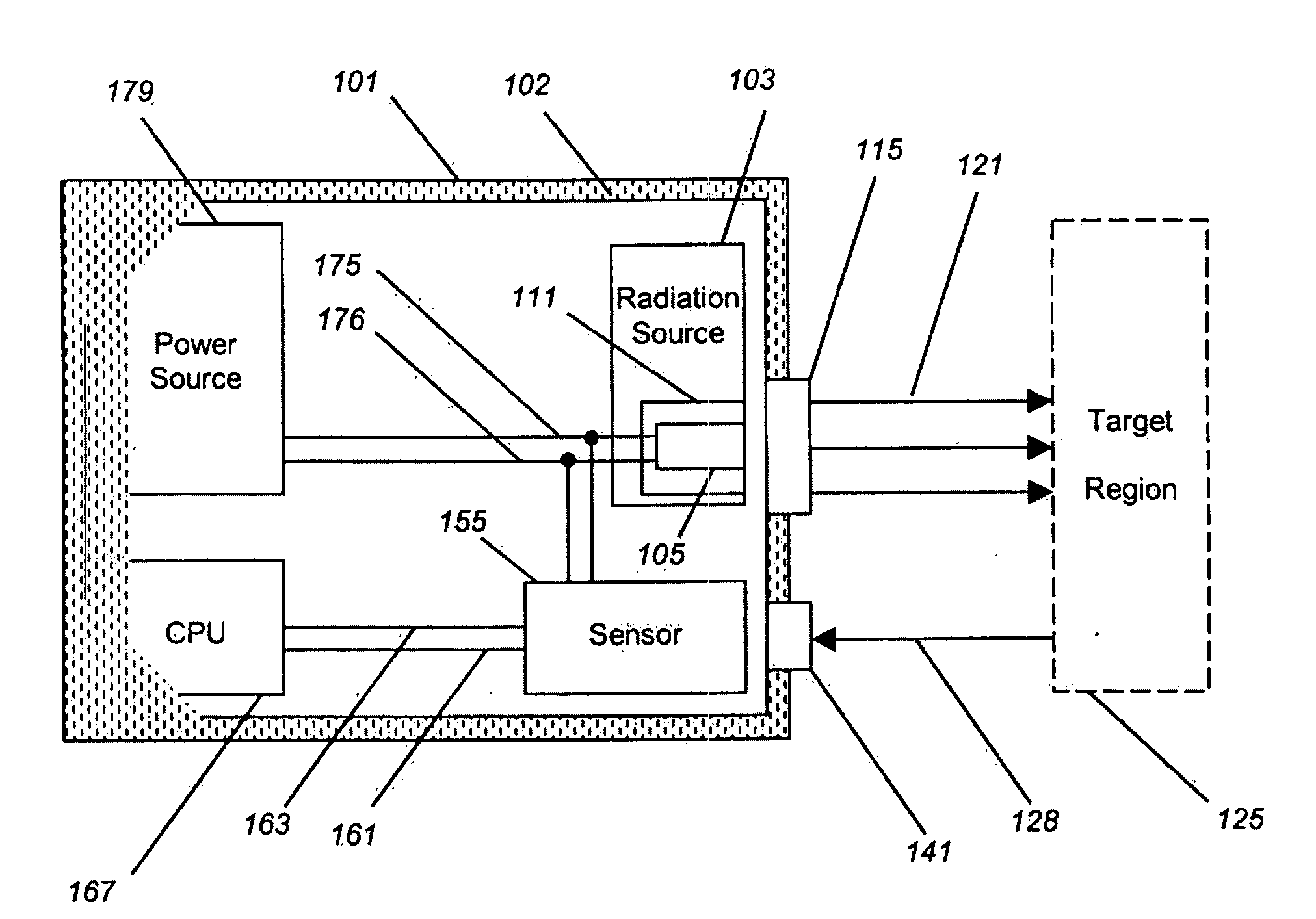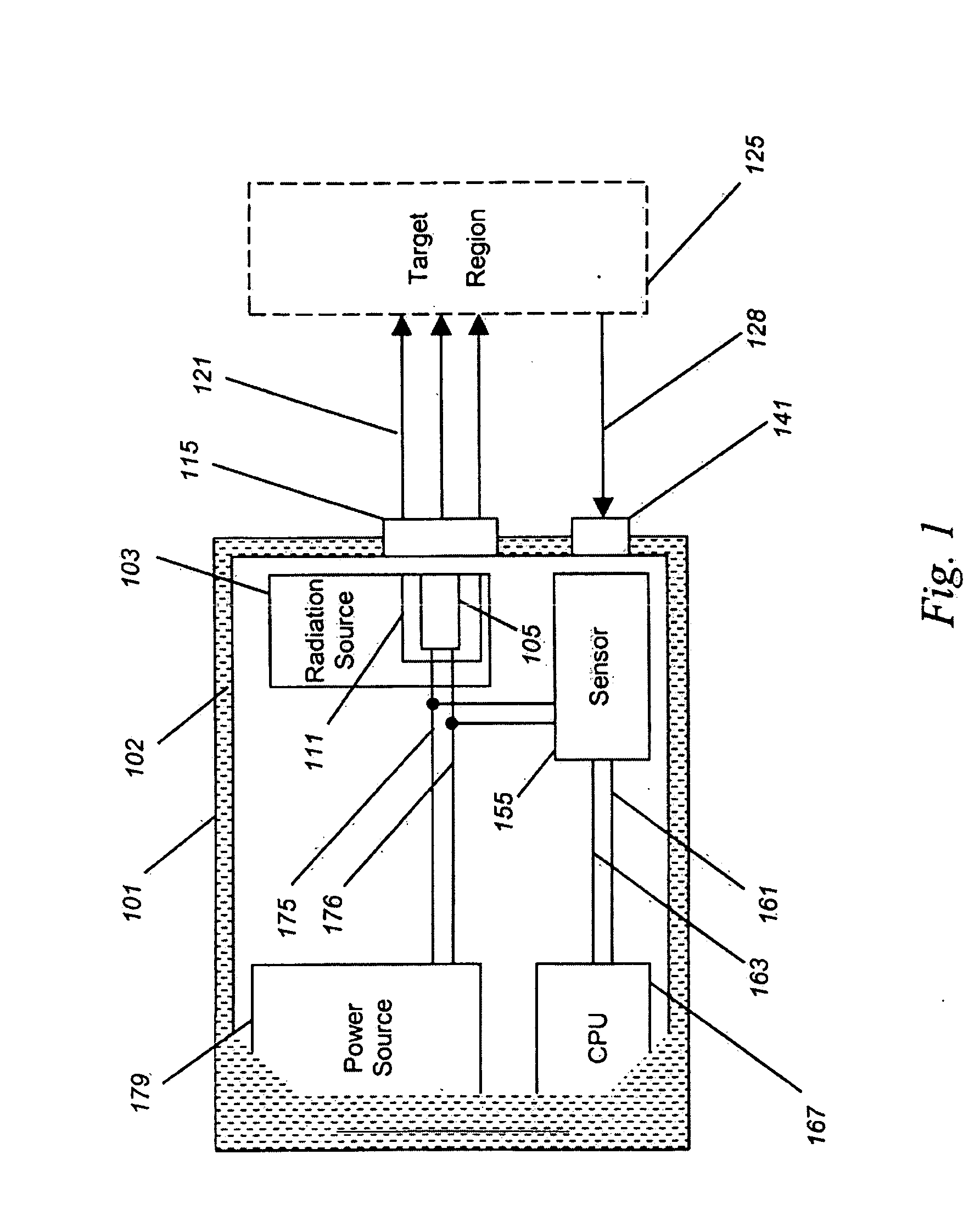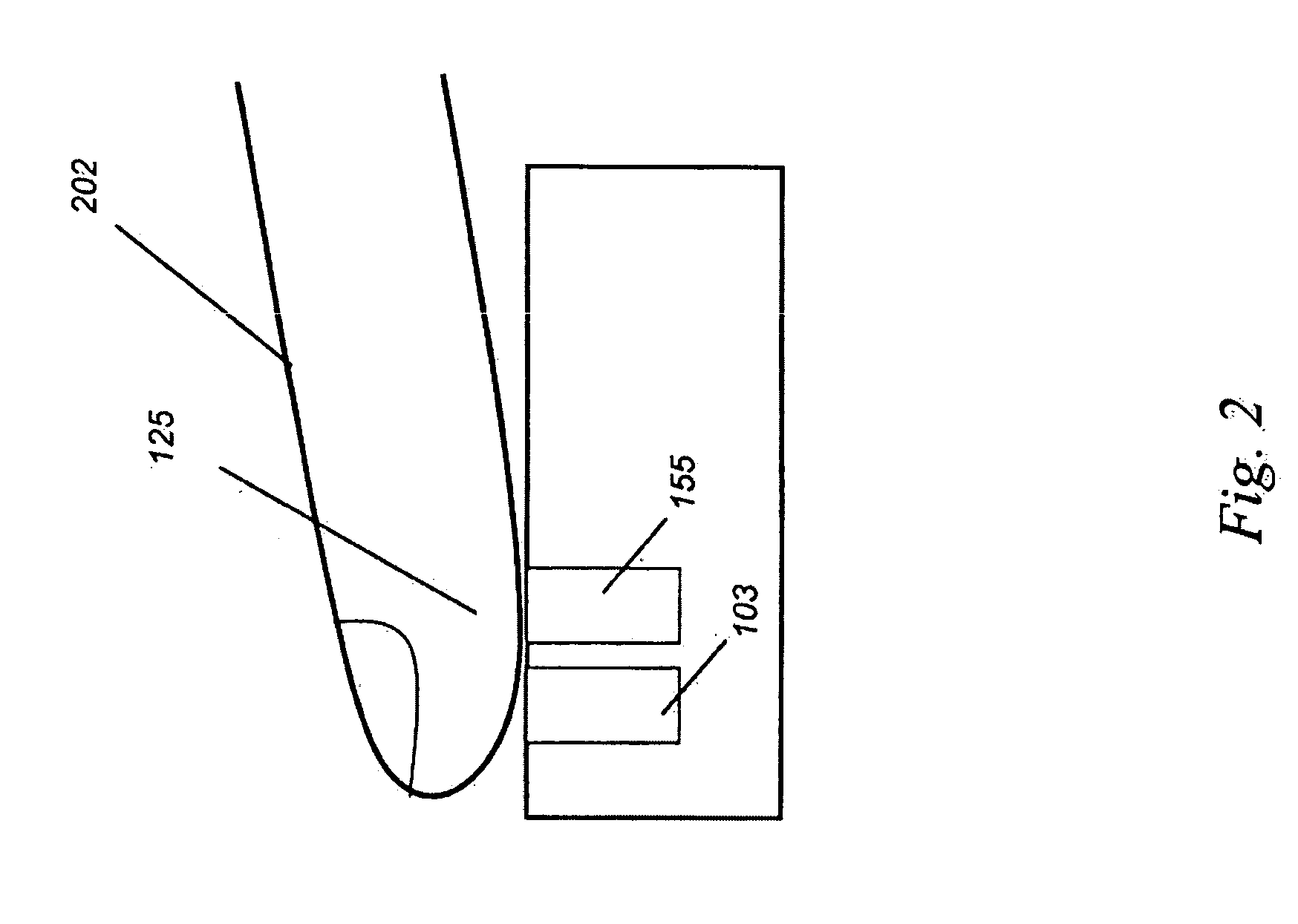Metabolism- or Biochemical-Based Anti-Spoofing Biometrics Devices, Systems, and Methods
a biometric and biochemical technology, applied in the field ofmetabolism-sensitive, can solve the problems of spoofing, deterioration, and deterioration, and achieve the effect of high security and spoofing resistan
- Summary
- Abstract
- Description
- Claims
- Application Information
AI Technical Summary
Benefits of technology
Problems solved by technology
Method used
Image
Examples
example 1
Determination of Sample as Living or Dead Using Hemoglobin Saturation Ratios
[0052]In this example, which reports data from an actual experiment performed on real and sham tissues, different samples were measured using a device constructed in accordance with embodiments of the invention as shown in FIG. 1. Light was collected from one emitter and detector pair, where the emitter was the raditional source of the visible light, and the detector is the radiation sensor. Optical spectra collected from several objects are shown in FIG. 5, offset along the absorbance axis for clarity. There are distinct differences in spectra between each sample shown. Living tissue spectra 462 and 463, for example, show hemoglobin peak 467, not a significant feature of the same tissues after death, respectively dead tissue spectra 472 and 473. When there is non-tissue, such as flesh-colored paper measured, paper spectrum 486 clearly lacks the expected hemoglobin peak 467. When a latex-glove is placed over...
example 2
Determination of Sample as Real or Sham Using Total Hemoglobin
[0059]Data from the experiment of Example 1, above, can be analyzed in a different manner. In this experiment, the determination is whether or not the tissue has intermediates normally present and balanced in tissue, in other words tissue in metabolic equilibrium. In this case, the measure is a level-based one based on a biochemical level, rather than a ratio-based one based on metabolic equilibrium. In this embodiment, an algorithm is comprised of the following steps:
[0060]a) determine the level of oxy and deoxy hemoglobin, sum to a total
[0061]b) If total blood content (tHb) is between 10 and 200 uM, then the tissue is real. Otherwise, the tissue is sham.
[0062]Using this algorithm, the determination is as follows:
TABLE 2Real versus Sham DeterminationSampleMaterialtHb (uM)Real or Sham?1Exposed Blood900Sham2Latex Fingertip1Sham3Tissue 1 (live)56Real4Tissue 2 (live)68Real5Tissue 1 (dead)41Real6Tissue 2 (dead)14Sham7Pink Pap...
example 3
Determination of Sample as Real or Sham Using NMR
[0065]Just as oxy and deoxy hemoglobin are kept in balance, with about 70% oxygenated hemoglobin and 30% deoxygenated hemoglobin in normal tissue, so are many intermediates that can be measured by NMR, and its medical imaging equivalent MRI, also kept at steady levels, or with steady ratios of various-components.
[0066]For example, in living tissue, the phosphorous spectrum can be measured using NMR or MRI. In the living body, inorganic phosphate (Pi) is incorporated into adenosine Triphosphate (ATP) or Phosphocreatine (PCr), both energy storage substances. In dead tissue, ATP, and its related substances ADP and AMP degrade to Adenosine and inorganic phosphate (Pi). Because of the interaction of the pools of PCr, ATP, and Pi, the levels are maintained in vivo in a narrow range of an energy-requiring equilibrium. In healthy, living tissue, the level of Pi is minimized using energy derived from food and oxygen, while in dead (or dying) t...
PUM
 Login to View More
Login to View More Abstract
Description
Claims
Application Information
 Login to View More
Login to View More - R&D
- Intellectual Property
- Life Sciences
- Materials
- Tech Scout
- Unparalleled Data Quality
- Higher Quality Content
- 60% Fewer Hallucinations
Browse by: Latest US Patents, China's latest patents, Technical Efficacy Thesaurus, Application Domain, Technology Topic, Popular Technical Reports.
© 2025 PatSnap. All rights reserved.Legal|Privacy policy|Modern Slavery Act Transparency Statement|Sitemap|About US| Contact US: help@patsnap.com



